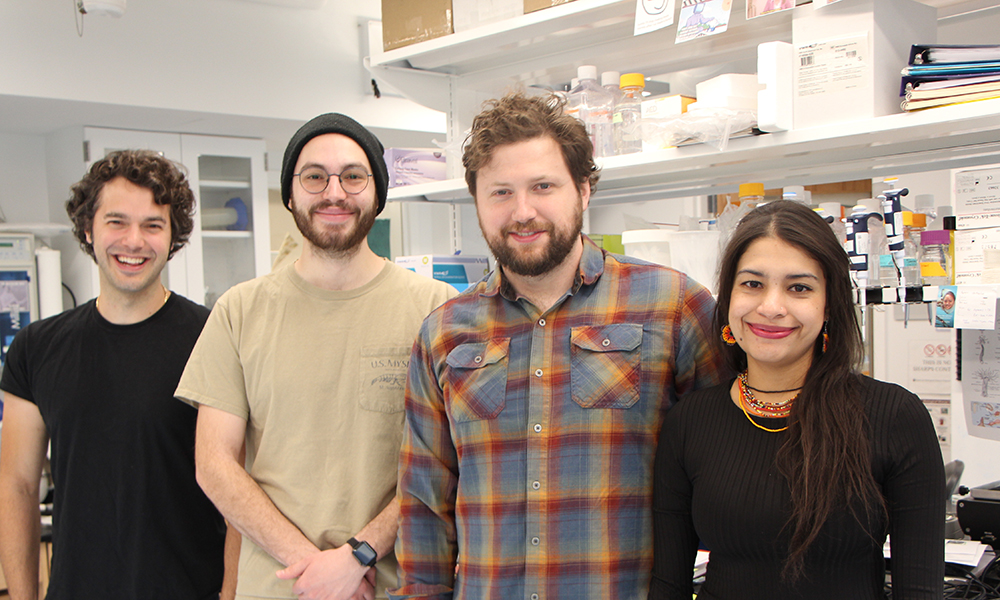Sea anemones are known for stinging, but not all anemones sting alike. By comparing two related anemones, the Bellono Lab has identified a small change in how a…
Tag: Publication
Raising a Translation Factor: A Novel Co-chaperone Family Guides eEF1A to Maturity [Denic Lab]
All cells contain a network of molecular chaperones that help other proteins (often called “clients”) fold into functional three-dimensional conformations. Decades of research on chaperones has led to…
The Eyes Have It [Sanes Lab]
Vision begins in the retina, a part of the brain that lines the back of the eyeball. It contains complex neural circuits composed of numerous cell types that…
Protein Called Spartin Helps Recycle Lipid Droplet Organelles (Chung Lab)
Nature Cell Biology (PDF) has published a paper authored by MCB faculty Jeeyun Chung. The study outlines a role for the protein spartin in breaking down subcellular organelles…
Multiple New X-ray Snapshots Reveal How Transition Metals Cross Cellular Membranes Through Nramp Transporters [Gaudet Lab]
Transition metals like iron and manganese play crucial roles in various metabolic processes like photosynthesis, oxygen transport, and energy production through the electron transport chain. Transport proteins residing…
You Can’t Learn Too Much: How Brain Representations of Complex Odor Mixtures Evolve with Experience [Murthy Lab]
The piriform cortex in the mammalian brain is the largest cortical region that receives direct sensory input from the olfactory bulb as well as complex top-down inputs from…
Sensory Receptor Evolution in Octopus and Squid [Bellono Lab]
Cephalopods like octopus and squid are well known for their repertoire of sophisticated behaviors governed by their elaborate nervous systems that are comparable in size to complex vertebrates,…
How Simple Multicellularity Can Evolve into Regulated Reproduction [Murray Lab]
The development of multicellularity has been a remarkable turning point in Earth's biological history, enabling greater morphological diversity and the formation of new organizational structures. This transformation hinged…
How Fish Learn to Ignore Inconsequential Events [Engert Lab]
As a graduate student in the Gabbiani lab at Baylor College of Medicine, I studied how locust brains processed sensory information about an approaching predator and gave rise…
What’s in a Squeak? Wild Mice Provide New Insights into Why Vocalization Evolves [Hoekstra Lab]
All babies cry, but, as any parent can tell you, not all cries are the same. Across mammals, young animals are born with the ability to produce cry…











